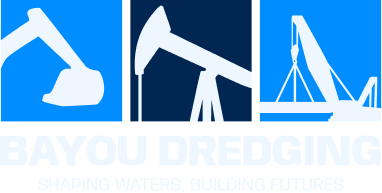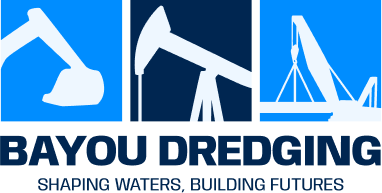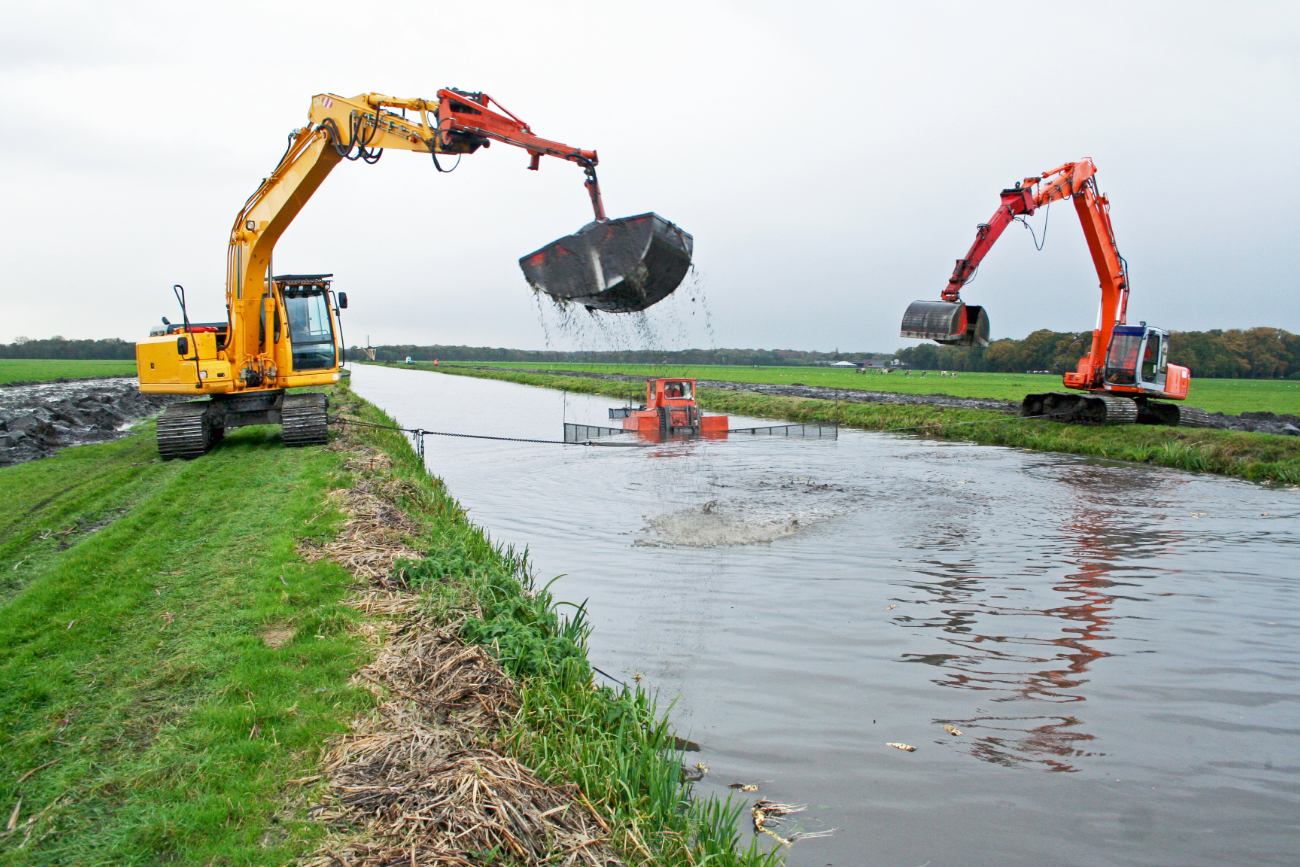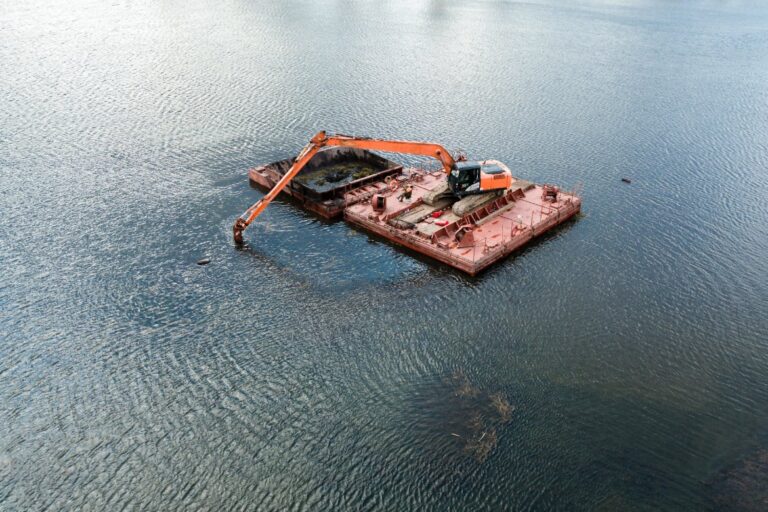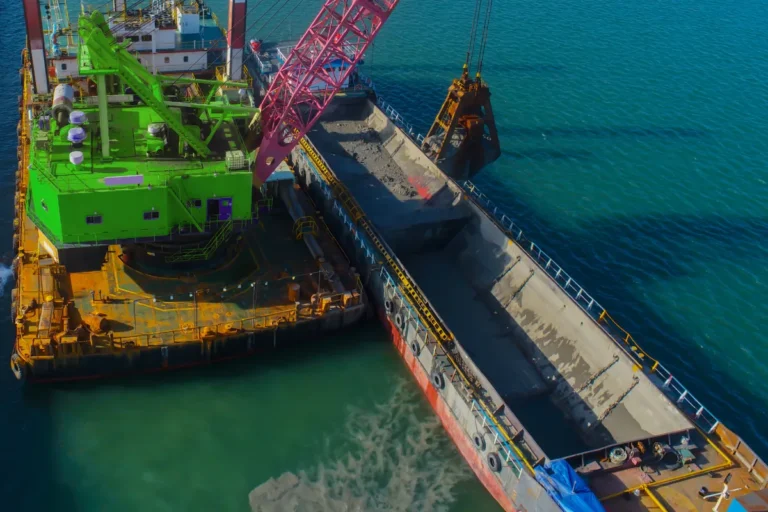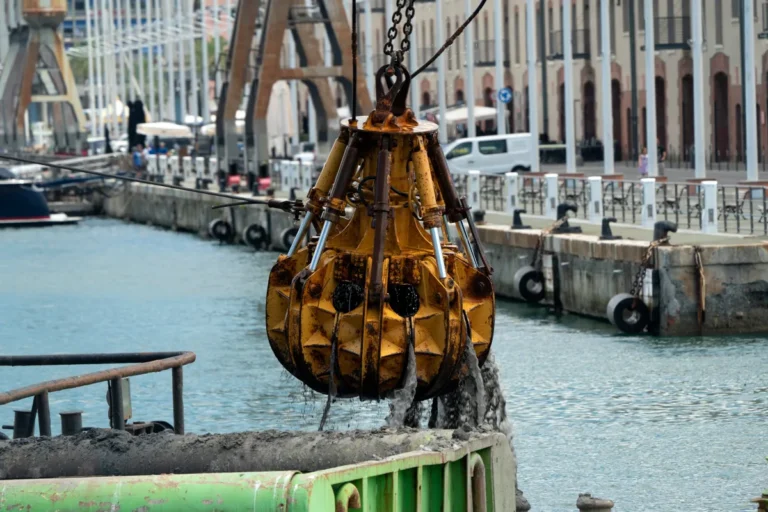Maintenance dredging is a crucial process that ensures the long-term health and functionality of waterways, harbors, and coastal areas. Over time, sediment accumulation from natural processes such as tides, currents, and erosion can cause waterways to become shallow or obstructed, hindering safe navigation and impacting local ecosystems. By regularly removing this sediment, maintenance dredging helps maintain deep, clear channels for vessels, protects infrastructure from damage, and supports environmental sustainability through efforts like beach reclamation. Whether in bustling ports or coastal communities, maintenance dredging is an essential practice for ensuring safe, efficient, and resilient waterways.
What is Maintenance Dredging?
Definition and Purpose of Maintenance Dredging
Maintenance dredging is the regular and ongoing process of removing accumulated sediment, silt, and debris from the bottom of water bodies such as harbors, rivers, and canals. The primary goal of maintenance dredging is to maintain and restore the depth and navigability of these waterways, ensuring that vessels can pass safely and efficiently. Over time, sediment naturally builds up in waterways due to water movement, tides, and erosion, which can cause channels to become shallow or obstructed. Maintenance dredging prevents these blockages, supporting the smooth flow of marine traffic and the overall functionality of maritime infrastructure.
The purpose of maintenance dredging is not only to keep waterways open but also to improve water quality and support the surrounding ecosystems. For example, by removing excess sediment, dredging can prevent the formation of shallow areas that could impact fish habitats and water quality, leading to healthier aquatic environments.
Difference Between Maintenance Dredging and Capital Dredging
While both maintenance and capital dredging involve the removal of sediment from waterways, they differ significantly in their purpose and scope.
- Capital Dredging: This type of dredging is typically done when a waterway is first constructed or when it needs to be expanded. The goal of capital dredging is to create or deepen a channel, port, or harbor to accommodate larger vessels or increase the overall capacity of a waterway. Capital dredging is often a one-time or infrequent project that sets the groundwork for future navigation.
- Maintenance Dredging: In contrast, maintenance dredging is an ongoing and routine process. Once a channel, harbor, or port has been constructed, maintenance dredging ensures that the waterway remains clear of sediment accumulation over time. This is a continual requirement to ensure that depths are maintained, preventing blockages or shallowness that could hinder navigation. Unlike capital dredging, maintenance dredging addresses the natural, recurring build-up of sediment, ensuring waterways stay functional and safe.
Why Maintenance Dredging is a Recurring Necessity for Safe and Clear Waterways
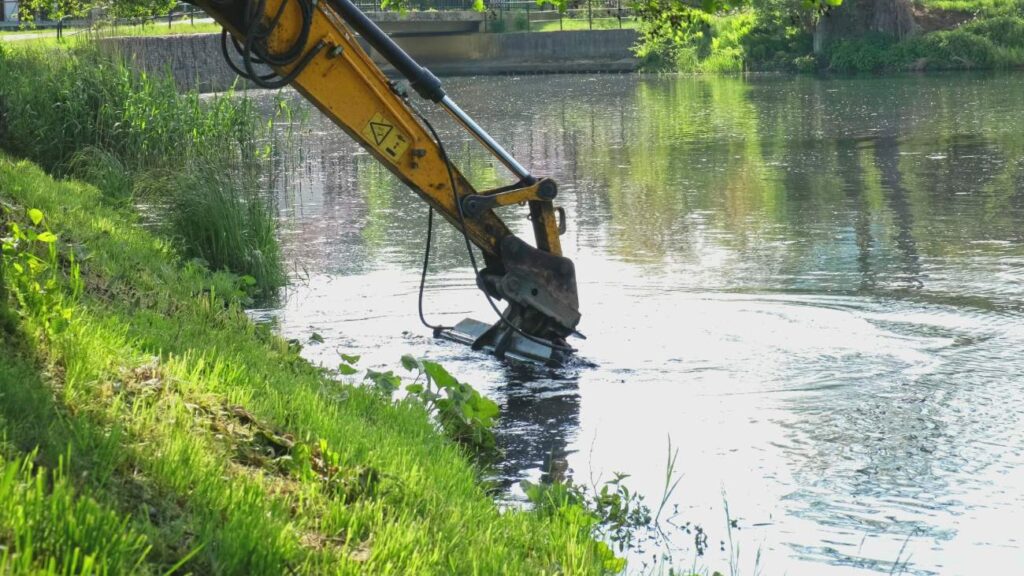
Sediment constantly accumulates in waterways due to natural processes like tidal movement, rainfall, and river flow. Over time, even a well-designed waterway can become shallower or more obstructed if sediment is left unchecked. This makes maintenance dredging a recurring necessity.
For harbors, this is particularly important as harbor dredging helps keep vital shipping lanes clear and deep enough to accommodate modern vessels. Without maintenance dredging, harbors would become inaccessible, potentially crippling local economies and disrupting global supply chains. Regular dredging also supports beach reclamation efforts, where sediment is often redistributed to restore or expand coastal areas that have been eroded. Without the continued practice of maintenance dredging, coastal areas would face growing challenges from erosion, which would ultimately impact tourism and local ecosystems.
In addition to supporting safe and efficient transportation, maintenance dredging ensures that waterways remain resilient and adaptable to changing conditions, maintaining both economic viability and environmental health.
The Key Benefits of Maintenance Dredging
Enhancing Navigation Safety
One of the primary benefits of maintenance dredging is its role in enhancing navigation safety. In busy harbors and canals, sediment accumulation can quickly become a hazard to ships and boats. Regular maintenance dredging ensures that these water bodies maintain the proper depth for safe passage. This is particularly important for harbors, where large vessels, including cargo ships, cruise liners, and tankers, rely on deep and unobstructed channels to navigate safely.
Sediment build-up in harbors and canals can significantly reduce water depth, making it difficult or even impossible for vessels to pass through safely. For instance, without regular harbor dredging, the buildup of silt, sand, and mud can create shallow areas or even block entire channels. This obstructs the flow of maritime traffic, leading to delays, increased fuel consumption, and costly repairs. Maintenance dredging removes these accumulated sediments, keeping navigation routes clear and ensuring smooth and safe passage for watercraft of all sizes.
Protecting Infrastructure
Maintenance dredging also plays a vital role in protecting critical port infrastructure. As sediment builds up in waterways, it can cause damage to port structures, docks, piers, and other facilities that are essential for maritime operations. For example, sedimentation can erode the foundation of docks and wharfs, putting pressure on the structural integrity of these assets and increasing maintenance costs.
By removing excess sediment, maintenance dredging helps to prevent infrastructure damage and ensures that the port or harbor remains operational. This is particularly crucial in busy ports where even small disruptions can cause significant economic losses. Harbor dredging, in particular, is essential to keep these infrastructures intact and functioning at peak capacity, ensuring both the safety of the waterway and the long-term viability of maritime operations.
Supporting Environmental Health
Maintenance dredging is not only important for safe navigation and protecting infrastructure, but it also supports the health of local ecosystems and water quality. Over time, sediment accumulation can significantly impact water quality. Stagnant water caused by shallow areas can lead to reduced oxygen levels, which harms aquatic life. The buildup of organic materials and pollutants in the sediment can also lead to the growth of harmful algae blooms, further degrading the water quality.
By regularly performing maintenance dredging, sediment is removed before it can lead to these environmental issues, helping to maintain healthy waterways. For instance, proper dredging in harbors and coastal areas contributes to beach reclamation efforts, restoring and preserving beaches by preventing erosion and ensuring clean, clear water.
Furthermore, regular dredging helps to minimize sediment accumulation that can alter habitats. Shallow, stagnant waters may disrupt the natural habitats of fish, plants, and other marine life. By maintaining the flow of water and removing excess sediment, maintenance dredging supports healthy ecosystems, providing cleaner environments for wildlife and improving the overall biodiversity of aquatic habitats. This is particularly vital in areas where harbor dredging activities can influence local marine populations and coastal ecosystems.
Through the combination of navigation safety, infrastructure protection, and environmental health, maintenance dredging is essential to ensuring that waterways remain functional, sustainable, and safe for both human and ecological use.
The Role of Harbor Dredging in Maintaining Safe Waterways
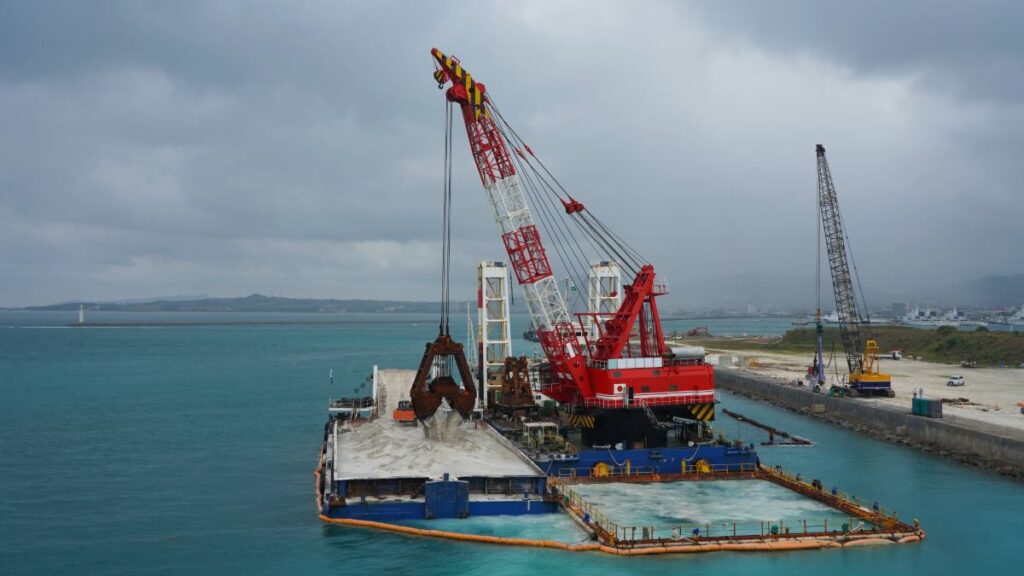
Importance of Dredging in Harbors to Ensure Deep and Clear Channels
Harbor dredging plays a crucial role in maintaining the deep and clear channels necessary for safe and efficient navigation. Harbors are essential gateways for international trade, and ensuring that these waterways remain free from sediment buildup is vital for the safe passage of ships. Whether it’s a small fishing vessel or a massive container ship, all vessels depend on dredged harbors to navigate without obstruction. The process of maintenance dredging removes accumulated sediment, such as mud, sand, and silt, that naturally settles at the bottom of harbor channels, ensuring that the water depth remains consistent and safe for maritime operations.
For modern shipping fleets, harbor dredging is particularly important as ships continue to grow larger and heavier. These larger vessels, known as “Panamax” ships, require deeper channels and deeper berths to dock. Without regular maintenance dredging, harbors may become too shallow to accommodate these vessels, limiting trade capacity and access to global shipping routes. Harbor dredging, therefore, is essential for ensuring that waterways stay functional and efficient, preventing costly delays and disruptions in trade.
Challenges Faced in Maintaining Harbor Channels, Including Sediment Accumulation and Erosion
Despite the importance of harbor dredging, maintaining clear and deep harbor channels presents several challenges. One of the most significant issues is the constant accumulation of sediment in waterways. Sediment naturally enters harbors through river flow, tides, and ocean currents. Over time, this sediment builds up, causing shallower waters that can impede vessel movement.
Another challenge is erosion, which can alter the natural flow of water and contribute to uneven sediment accumulation in certain areas of the harbor. Storms, rising sea levels, and human activities can accelerate erosion, shifting sediment from one part of the harbor to another. These dynamic environmental factors require continuous monitoring and maintenance to prevent significant disruptions.
In addition to natural challenges, the scale of harbor dredging projects can be immense. In some cases, dredging efforts must account for environmental regulations and the preservation of local marine life, making the process more complex. However, despite these challenges, regular harbor dredging is necessary to ensure that these vital waterways remain navigable and secure for both commercial and recreational vessels.
The Impact of Harbor Dredging on Local Economies and Trade Activities
Harbor dredging has a direct and significant impact on local economies and trade activities. Ports are economic hubs, driving commerce by facilitating the movement of goods both locally and internationally. When harbors are properly maintained through regular dredging, they ensure that trade flows smoothly, which helps sustain and grow the local economy.
In particular, harbor dredging enables the safe passage of larger vessels, which can carry more goods at once. This increases shipping efficiency, reduces transportation costs, and boosts the overall economic competitiveness of a region. A dredged harbor is also more attractive to international shipping companies, as it can handle a higher volume of traffic, fostering economic growth and job creation in industries such as logistics, manufacturing, and retail.
Moreover, the benefits of harbor dredging extend beyond commercial trade. Dredging helps maintain the functionality of harbors used for recreational boating, fishing, and tourism. For areas that rely on marine tourism, such as cruise ports, proper dredging ensures that these industries continue to thrive, supporting local businesses and communities.
Through the ongoing practice of harbor dredging, local economies benefit from increased trade capacity, job opportunities, and sustainable maritime industries, making it an essential part of maintaining safe and efficient waterways.
Maintenance Dredging for Beach Reclamation Projects
What is Beach Reclamation, and Why It Often Requires Maintenance Dredging
Beach reclamation is the process of restoring or expanding coastlines that have been eroded due to natural forces such as tides, storms, and rising sea levels or due to human activities like construction and development. Over time, coastal erosion causes significant loss of sand, which reduces the width of beaches and threatens the stability of nearby ecosystems. Beach reclamation helps replenish these lost sands and can provide long-term protection to coastal areas by increasing the natural buffer between the land and the sea.
Maintenance dredging is often a critical component of beach reclamation projects. The process of dredging removes sediment and sand from the seabed or nearby water bodies and redistributes it to areas where beaches have been eroded. By using dredged material, coastal areas can be restored to their former state or even expanded, creating wider and more resilient beaches. This method is not only effective but also cost-efficient when compared to transporting sand from distant sources, which can be expensive and logistically challenging.
How Dredging Helps Replenish Sand and Restore Beaches
Sediment dredging is a crucial tool for replenishing sand on eroded beaches. Coastal erosion results in the loss of sand due to the continuous movement of waves and currents, which gradually wash away the shorelines. Through the process of maintenance dredging, sand and other materials are removed from deeper parts of the water, such as harbors, channels, or the ocean floor, and relocated to the affected beaches. This replenishes the sand lost to erosion and helps restore the beach to its original shape and size.
Dredging can also address sediment deficiencies in areas where natural sedimentation processes are insufficient to replace the sand lost through erosion. In some cases, dredged material is specifically selected to match the grain size and composition of the native beach sand, ensuring that the newly placed sand blends seamlessly with the existing coastal environment. This method of beach restoration has been proven effective in preventing further erosion and protecting inland properties from the damaging effects of storm surges and rising tides.
Benefits of Beach Reclamation
Beach reclamation through maintenance dredging offers several vital benefits for both human communities and local ecosystems.
- Coastal Tourism: Many coastal regions rely heavily on tourism, particularly beach tourism, for economic stability. Reclaimed beaches provide an attractive and safe environment for tourists, supporting activities such as swimming, sunbathing, and water sports. Wider, more resilient beaches are more appealing to visitors and can also handle greater foot traffic, contributing to a thriving tourism industry that benefits local businesses and generates revenue.
- Wildlife Habitats: Beaches play an essential role in the habitats of numerous species, including sea turtles, shorebirds, and other coastal wildlife. By restoring eroded beaches, maintenance dredging helps protect these critical habitats and supports biodiversity. Reclaimed beaches offer a stable environment for wildlife to nest and thrive, ensuring the long-term sustainability of coastal ecosystems.
- Protection for Local Communities: Coastal erosion poses a significant threat to the safety and stability of properties and infrastructure located near the shore. By expanding and restoring beaches, maintenance dredging acts as a protective barrier, reducing the impact of storm surges and tidal waves on inland areas. This protective effect helps safeguard local communities from flooding and coastal damage, which can be devastating during severe weather events.
When and How Often is Maintenance Dredging Needed?

Factors that Influence Dredging Schedules
The frequency and timing of maintenance dredging are influenced by several key factors. One of the most significant is sedimentation rates, which refer to the amount of sediment that naturally accumulates in waterways, harbors, and coastal areas. These rates vary based on environmental conditions, such as river flow, tidal movements, and storm patterns. Areas with high sedimentation rates may require more frequent dredging to maintain safe depths for vessels and prevent obstructions that could hinder navigation.
Another critical factor is water traffic. In busy harbors, for instance, higher vessel traffic can stir up more sediment, leading to faster accumulation. As ships and boats pass through channels, several key factors influence the frequency and timing of maintenance dredging water traffic, and the more likely it is that maintenance dredging will be required at regular intervals to keep navigation routes clear.
Environmental conditions, including tides, currents, and seasonal weather changes, also impact the sediment build-up and erosion patterns in coastal and harbor areas. Storms, hurricanes, and rising sea levels can increase sediment movement and exacerbate erosion, creating the need for more frequent dredging to combat the resulting changes. In regions where these conditions are particularly volatile, maintenance dredging may be needed more often to ensure that harbors and beaches remain navigable and protected.
Surveys, Monitoring, and Data Collection
Before embarking on any maintenance dredging project, a thorough assessment of dredging needs is required. This typically involves conducting detailed surveys of the waterway or coastline. Surveys may include bathymetric measurements to map the depth of the water and identify areas where sediment has accumulated. They may also involve environmental monitoring to assess the effects of dredging on local ecosystems and wildlife.
Monitoring is an ongoing process that helps track changes in sediment levels over time. This can include periodic inspections, satellite imagery, and sonar scanning to gather data on the rate of sediment accumulation and identify areas that may require attention. Data collection through these methods allows harbor managers and environmental experts to make informed decisions about when and where dredging is necessary.
Furthermore, modern technology, such as remote sensing and automated monitoring systems, can provide real-time data, which helps to predict sediment movement better and streamline the dredging process. This proactive approach ensures that dredging efforts are precisely targeted and optimized for efficiency, reducing the risk of unnecessary dredging while protecting the integrity of the waterway.
How Frequently Dredging Needs Arise for Harbors and Beach Areas
The frequency of maintenance dredging depends on several factors, including the specific characteristics of the waterway and the local environment. In harbors, where heavy traffic and constant sedimentation are common, maintenance dredging might be required every few months or annually, depending on the rate of sediment buildup. High-traffic commercial ports, for instance, often face frequent dredging schedules to keep the channels deep enough for large vessels.
For beach areas, the need for dredging largely depends on coastal erosion patterns. Areas prone to significant erosion, often exacerbated by storms or seasonal changes, may require more frequent dredging to replenish sand and restore beaches. In many cases, beach reclamation efforts are scheduled in line with periods of high tourist activity, such as before the summer season, to ensure that beaches are wide and safe for visitors.
In both harbors and coastal areas, maintenance dredging schedules are dynamic and subject to change based on environmental factors and the needs of the local community. Regular assessments and monitoring are essential for determining the optimal timing for dredging activities to ensure safe, functional, and sustainable waterways.
The Challenges and Considerations in Maintenance Dredging
Environmental Regulations and Their Impact on Dredging Activities
One of the most significant challenges in maintenance dredging is navigating the complex web of environmental regulations that govern dredging activities. Dredging operations, whether for harbor dredging or beach reclamation, can have potential environmental impacts, particularly on aquatic ecosystems and surrounding wildlife. To mitigate these risks, governments and environmental agencies impose strict guidelines and regulations to ensure that dredging is conducted in an environmentally responsible manner.
For instance, before starting any maintenance dredging project, a thorough environmental impact assessment (EIA) is often required. This assessment evaluates the potential effects of dredging on water quality, sediment disturbance, and local habitats. In some cases, dredging may need to be delayed or modified to avoid critical breeding seasons for marine life or to protect sensitive coastal areas. Additionally, dredging projects near protected zones, such as marine reserves or wildlife habitats, face stricter scrutiny, with regulations limiting the amount of material that can be removed and where it can be deposited.
As a result, dredging activities must be planned carefully to comply with environmental standards. Failure to adhere to these regulations can result in costly fines, project delays, or even the suspension of operations. Dredging companies must work closely with regulators, environmental groups, and local communities to ensure that maintenance dredging activities support sustainable waterway management while minimizing negative ecological impacts.
Technological Advancements in Dredging
Advances in dredging technology have significantly improved the efficiency, precision, and environmental friendliness of maintenance dredging operations. Modern dredging equipment now includes advanced machinery such as hydraulic dredgers, cutter suction dredgers, and environmentally sensitive dredging systems that can remove sediment with greater accuracy and less disturbance to the surrounding environment.
For instance, cutter suction dredgers are particularly effective for hard or compacted materials, such as clay and rock, that may otherwise be difficult to dredge. These systems use a rotating cutter to break up the sediment, which is then sucked into the dredger and pumped to a disposal site. This technology allows for more precise dredging, minimizing the spread of sediment into surrounding waters and reducing turbidity.
Similarly, new techniques in beach reclamation have enabled the use of dredged material to be strategically placed to restore eroded coastal areas with minimal environmental disruption. These technological advancements not only improve the effectiveness of maintenance dredging but also help to reduce the impact on local ecosystems by ensuring that dredging activities are performed with greater precision and care.
Balancing Dredging with Environmental Conservation
Balancing the need for maintenance dredging with environmental conservation efforts is a delicate task. While dredging is necessary for maintaining safe and navigable waterways, it must be carried out in a way that does not compromise the health of local ecosystems, including coastal habitats, fish migration routes, and water quality.
For example, harbor dredging projects often take place in areas that are home to important marine life, such as fish nurseries and coral reefs. In these situations, dredging operations must be carefully timed to avoid disrupting the breeding cycles of local wildlife. Techniques such as silt curtains or environmentally controlled dredging can be used to contain sediment and prevent it from spreading into the surrounding environment, thus protecting sensitive habitats.
Similarly, in beach reclamation projects, dredged sand must be chosen carefully to match the natural composition of the beach. The introduction of foreign materials could disrupt local ecosystems and wildlife. Maintaining this balance requires constant monitoring, the application of best practices, and ongoing collaboration between dredging operators, environmental agencies, and local stakeholders.
Overall, the challenge of balancing dredging activities with environmental conservation requires a combination of advanced technology, regulatory compliance, and sustainable practices. Through careful planning and the use of innovative techniques, maintenance dredging can continue to meet the demands of safe waterways while minimizing negative environmental impacts.
Conclusion
Maintenance dredging is a vital process for ensuring the safety, functionality, and environmental health of waterways, harbors, and coastal areas. By removing accumulated sediment, it maintains clear and navigable channels for ships, protects vital infrastructure, and supports the restoration of eroded beaches through beach reclamation efforts. While the process faces challenges such as environmental regulations and the need for advanced technologies, ongoing innovation and careful planning allow for a balance between efficient dredging and environmental conservation. Ultimately, maintenance dredging is an essential practice for safeguarding both the economy and ecosystems, ensuring that waterways remain safe, accessible, and sustainable for years to come.
